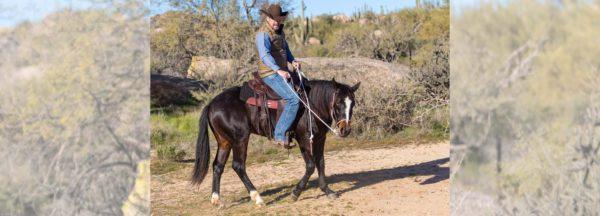Training Tip: Why You Should Use a Hackamore

If you’re starting a colt, you’ll want to have a hackamore in your tack room. I prefer to start colts in a hackamore and continue to use it through the colt’s first 10 to 14 rides. Throughout my years of experience starting colts, I’ve found that the hackamore gives colts a chance to learn how to give and soften to pressure with riders on their backs without having to deal with a bit just yet. Anytime you can make a new experience easy for a horse to understand, do it.
Using a hackamore also makes for a smoother transition for a colt going from responding to a halter on the ground to responding to the same type of pressure under saddle. The softer you can get a horse in a hackamore, the softer he’ll be in the bridle.
The hackamore is also more forgiving and allows for mistakes on the rider’s part. In the early stages of a colt’s under-saddle career, you don’t want to accidentally haul on the colt’s mouth or pull when you shouldn’t be pulling. If the horse is wearing a hackamore and you accidentally pull when you’re not supposed to, you’re not going to damage his mouth.
Even if you are an experienced horseman with exceptional feel and timing, I still recommend starting colts in a hackamore because it helps to develop softness in the colt before moving to the snaffle bit. My rule of thumb is to not put a bit in a colt’s mouth until I have him flexing well from side to side, I can stop him by picking up on one rein and he’s following his nose in the hackamore. When a colt can do all of those things well, then I’ll switch to a smooth mouth snaffle bit. I move all of my horses out of the hackamore at this time because I think that you can get more softness and collection in a bit than in the hackamore.
Now, I’m not saying that you can’t start a colt in a snaffle bit straightaway. Of course you can. I’ve started plenty of colts this way, but I think you get a better result if you start in the hackamore.
Looking for more training tips? Check out the No Worries Club. Have a training question? Send it to us at [email protected].
